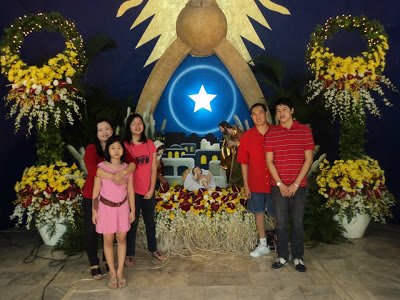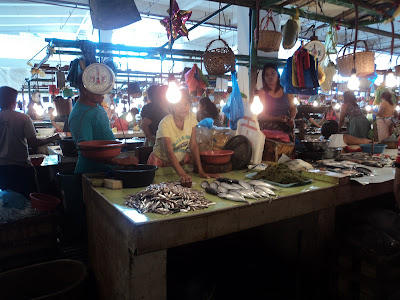Suroy Suroy Sugbo! (Cebu)
Name: Kyle Finley Siao
Section: SA 21 G
Date : February 4, 2013
Strategy: Don’t Complain and finish the task!
Task: Bai! (Bro!)
#significantothers #socialmap #status
For this task, I ask my uncle’s workers to help me in making
the social map of Cebu. Even if I don’t know their names, I call them “bai” and
that’s how Cebuanos address each other if they don’t know that person’s name.
We take note
of the political, economic, religious and tourist spots in Cebu. It’s important
that when you make a social map, you take note of these spots. You can’t make a
simple social map without these elements. Without the help of others, it would
also be impossible to do this task.
The easiest
to take note was the tourist spots since we know that majority of Cebu’s tourist
spots are in the other island (Mactan Island).
(The social map was passed in the written report and apparently
I forgot to take a photo of it)
Task: Adto ta sa
Simbahan! (Let’s go to the church!)
#religion #culture #values
#beliefs #elements of culture
p.s I wasn’t able to go personally to all this churches on
February 4, because the distance between the three churches is really far. I
only used old photos because I’ve been there before and the cemetery task
really killed my time. )
(Saint Pedro
Calungsod Chapel)
This church
was constructed for the canonization of the local patron saint, St. Pedro
Calungsod. Since the church is barely a year old, I think that majority of the
church goers are Cebuanos who are living near that place. It’s because the
church is located far away from the city proper. The church’s design is so
modern and beautiful. They named the church because of the patron saint.
(Sacred
Heart Parish)
The church’s designed to be a huge church and it already had
provisions for airconditioning units. At first the church had only fans but
because of the help of the community, they were able to acquire airconditioning
units and became on the first airconditioned churches in Cebu. They named the
church “Sacred Heart” because it was built together with the Sacred Heart
school. Majority of the church goers are
Chinese Cebuanos. It’s because this Church is one of the rare churches in the
country that has a strong Chinese culture. It celebrates Chinese celebrations
like Chinese New Year, Moon Cake festival and many more. I’ve been attending
Sunday masses in this church since I was born.
(Basilica
del Santo Nino)
(Magellan’s
Cross, Basilica del Santo Nino)
This church is the most famous church in the province of
Cebu. This is where the image of the Santo Nino is being kept. During the
Sinulog festival, most Cebuanos attend the Novena masses here and believed that
when they complete the Novena masses, they would be given a miracle by the
Santo Nino. This church is nearly 400 years old and that explains for its
“classic” design. This church is also built near the downtown areas of Cebu
because it’s also near the Magellan’s Cross.
In short,
Religion plays a major role in every Filipino’s life. In this case
(Catholicism), hearing masses at these kind of churches has always been part of
the culture and beliefs of the locals. The teachings of the church help open up
the eyes of the locals and see the Social Conflict of this world and their
purpose in this world (structural functionalism).
Task: Kahadluk sa
Patay!
#dead #action #tradition #beliefs #elementsofculture
It’s not
surprising that from 1991-2010, all of the mortality belonged here since the
cemetery I visited was the Mandaue Public Cemetery and it was opened during the
mid 2000s. It was first time going there and I didn’t have an idea how the
cemetery would look like and I even had a hard time looking for it. This killed
my time for the fieldwork but seeing the list of 25 names makes it worth it. Despite
being new, the place wasn’t really that clean and safe though.
Task: Trip to the Art
Museum
#art #culture
#nationalism #socialinteraction #symbol #freedom #elementsofculture
This was the task I wasn’t able to complete in Cebu. This was
taken at U.P Dilimian’s Vargas Museum and apparently this was the only time I
trusted someone to borrow my phone and take a photo of me. During this time,
there weren’t any artists around the museum
.
Jose Terence Ruiz –
He spent his early days at the Ateneo de Manila University and took his fine
arts program at the University of Santo Tomas where he graduated cum laude. He
is well-known for wry and compelling political cartoons, and worked on the
editorial pages of major broadsheets in the Philippines. His work “Dona Siempre
BienSur” also reflected how the lives of the Filipinos were during the
colonization of the Spaniards.
Pablo Baens Santos-
His works have been known expose the state of the nation’s social ills,
political abuses and inequities. And it was through his painting “Changing Rice
Fields” that I’ve noticed his sense of nationalism and showing how Filipinos
have been working the hard way.
I think that the famous European and Americans arts are
focusing more on a specific significant person in their country. Unlike the
Philippine art, where we put emphasis on our country as a whole. I think that
the Philippine art is more nationalistic than the other arts and the experience
of being colonized by other countries may have contribute to this.
Task: Adto ta sa
pasil! (Let’s go to the market!)
#publicmarket #notsupermarket #socialconflict #structuralfunctionalism
Location: The newly opened Mandaue Public Market
The mangoes
in Cebu are really famous. If you ask other people about mangoes, they would
say that “it’s from Cebu”. There are mangoes grown outside Cebu, however people
would still say that mangoes are made from Cebu. Mangoes have been the most
exported local product in Cebu. These mangoes could be processed into dried
mangoes and I’m sure you’ve heard of Cebu dried mangoes. But have you heard of
other names? Like Bohol dried mangoes?
I had to
rush in taking the photos since I was double parking and the CITOM officer
(Cebunao version of the MMDA) was on patrol that time.
Task: Kaon ta bai! (Let’s
Eat!)
#food #cebulechon #puso #yummy #culture #nativefood
(Spicy Lechon Belly)
Puso (Hanging Rice)
It was easy to find the local dish since my family usually orders
Lechon belly for an event and the best food to pair with this one is Puso or
hanging rice. For me, the lechon belly has been improvised from the Lechon as a
whole. The cebu Lechon has been gaining attraction because of how it is being
cooked and how it tastes and how it is different from other lechons around the
country. The puso is like a customization since rice has been a staple of
Filipino people. This is like an innovation to make Cebuanos unique form other
Filipino races. The Lechon Belly and the puso preserves the Cebuano heritage on
food and it shows the identity of a Cebuano. You’re not a Cebuano if you don’t know
what puso is!
Task: Hadluka ani uie!
(This is scary!)
#hauntedareas #culture #beliefs #scary
Haunted Places In Cebu (that I was able to take note)
*Our old house in Echavez Street, cebu
*Sacred Heart school – Jesuit Gen. Maxilom Campus
*Ateneo de Cebu – Canduman Campus
*Sacred Heart School- Hijas de Jesus
*Bethany Christian High School
*Maria Luisa Village
These haunted areas are within “ghost cemeteries! Maybe 5 kilometers or less. I
think that explains why these places are haunted. These “spirits” might want to
visit nearby places around the town. For example, Sacred Heart School – Jesuit Gen.
Maxilom Campus had a lot fo ghost stories. This is where I graduated from grade
school and my teachers would always share some of the school’s scary stories. We
also knew that there was a cemetery behind the school and sightings of a white
lady, little child, and a headless man have been reported. I think it really has something to do with cemeteries that are near you and thus resulting to supernatural things.
Personal Reflection (for the fieldwork): This is the 2nd
and hardest fieldwork that I took for SA 21 because I was alone in doing all
this work. Plus, it was an unexpected one where I decided to spend my long weekend with my family and all of the sudden you are given this task. at least I was able to complete it. I didn’t have the help of my parents (except for them allowing me to
use the car) since they were busy with work, and my siblings had classes (one
is in High School the other is in Grade School). I wasn’t able to go to all
places because of the heavy traffic which caused me a lot of time and the
following the day, I had to leave for Manila already. Despite the limited time
I had, I was happy to have done most of the tasks (I completed the other one in
Manila).
















No comments:
Post a Comment